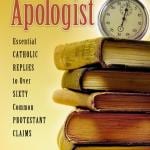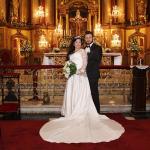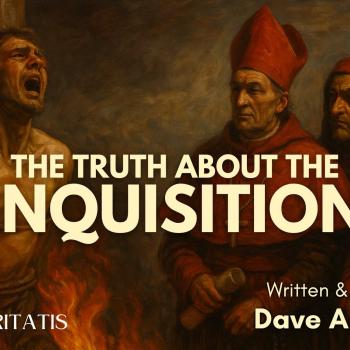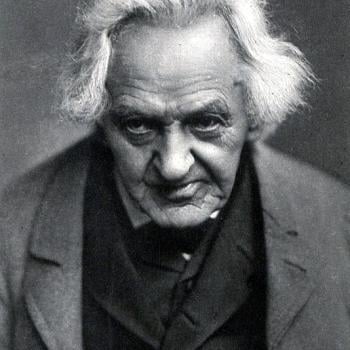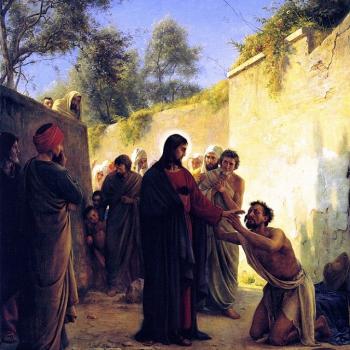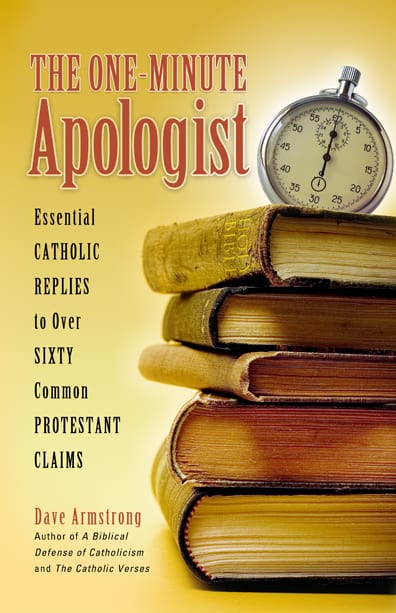
[the following is from my book, The One-Minute Apologist (Sophia Institute Press, 2007; available for as low as $2.99 in several e-book formats]
*****
How could true Christianity pollute the teachings of Jesus with pagan images, rituals, and ideas?
THE ONE-MINUTE APOLOGIST SAYS:
Truth is truth wherever it is found. The Catholic Church, following St. Paul’s example, makes use of existing practices to spread Christ’s message.
All of God’s creation is good. An act or practice (not including those that are immoral, like cannibalism or human sacrifice) can be good or evil depending on the circumstances and meaning given to it. During the fourth century, many items or gestures from pagan rituals were indeed blended into the Christian faith: such as genuflection, incense, and candles. But there is nothing intrinsically wrong with such things; even if they were part of pre-Christian worship, their incorporation into Christian practice does not necessarily constitute a pagan “pollution” of Christianity.
In fact, by adopting pre-Christian elements and practices — devised by men in an attempt to reach God without the benefit of revelation — the Church can “reclaim” them for Christ, directing them toward the worship of the true God. For example, the pagans of northern Europe (like the ancient enemies of the Hebrews) used trees as idols. We use the evergreen Christmas tree as a symbol of everlasting life: life in the dead of winter, just as Christ brought life to the deadness of humanity. The tree itself is a neutral (and beautiful) object: a part of God’s good creation. The key to true worship is the inner attitude; the heart.1
Some object that the word “Easter” is of pagan origin; hence many non-Catholic Christians prefer the term “Resurrection Day.” Now, the etymological derivation of the word is uncertain, but some think it came from the Anglo-Saxon spring goddess, Eostre. If so, using the word to signify Christ’s Resurrection would represent another Christianization or “baptizing” of a human custom in order to supersede the old paganism and give the rituals an entirely new meaning in the light of Christ’s revelation. A word is not evil in and of itself. Even sacred words usually have secular origins.
A PROTESTANT MIGHT FURTHER OBJECT:
That may be all well and good, as far as it goes. But there is still no scriptural warrant for such practices of “incorporation.” Christianity must always be based on the Bible — not paganism — because that is God’s revelation to and for us: our standard
THE ONE-MINUTE APOLOGIST SAYS:
The Bible does contain indications of this practice, such as the Apostle Paul’s speech to the Greek intellectuals and philosophers at the Areopagus, or Mars Hill, in Athens. Here, in Acts 17:15-34, he effectively evangelized by using symbols and ideas familiar to his hearers. He complimented their religiosity and noted a pagan “altar” (an idol!) with the inscription, “To an unknown god.” He then preached that the “unknown god” was Yahweh, the God of the Jews: the true God, as opposed to “shrines made by man,” and the sovereign and sustaining creator. He quoted pagan poets and philosophers — Epimenides of Crete (also cited in Titus 1:12) and Aratus of Cilicia — and expanded upon their understanding.
When the Church annexes pagan customs and holy days such as Easter, Christmas, All Souls Day, and All Saints Day, it is simply utilizing St. Paul’s evangelization strategy. This does not represent a wholesale adoption of paganism, or some diabolical mixture of idolatry and paganism with Christianity. If that were true, Paul would also stand guilty. Yet he states with confidence:
1 Corinthians 9:19-22 [RSV, as throughout]: “For though I am free from all men, I have made myself a slave to all, that I might win the more. To the Jews I became as a Jew, in order to win Jews; to those under the law I became as one under the law — though not being myself under the law — that I might win those under the law. To those outside the law I became as one outside the law — not being without law toward God but under the law of Christ — that I might win those outside the law. To the weak I became weak, that I might win the weak. I have become all things to all men, that I might by all means save some.”
Interestingly, this critique can backfire on Protestants, for skeptics make a similar criticism of Christianity itself: tracing the doctrine of the Trinity to Babylonian three-headed gods, for example, and Christ and His Resurrection to Mithraism or one of many other “God-hero myths.” But these pagan associations (or curious similarities) don’t stop Protestant critics of the Catholic Church from believing in the Triune God or the Resurrection. Neither do the superficial similarities between Marian veneration and Isis-worship stop Catholics from properly honoring the mother of their savior.
“[T]here lurked in those pagan festivals themselves, in spite of all their sensual abuses, a deep meaning and an adaptation to a real want; they might be called unconscious prophecies of the Christmas feast . . . the Sun of righteousness, the Light of the world . . . on the twenty-fifth of December, after the winter solstice, breaks the growing power of darkness, and begins anew his heroic career.”
PHILIP SCHAFF (PROTESTANT CHURCH HISTORIAN)
1 See, for example, Mk. 7:6-8
*****


